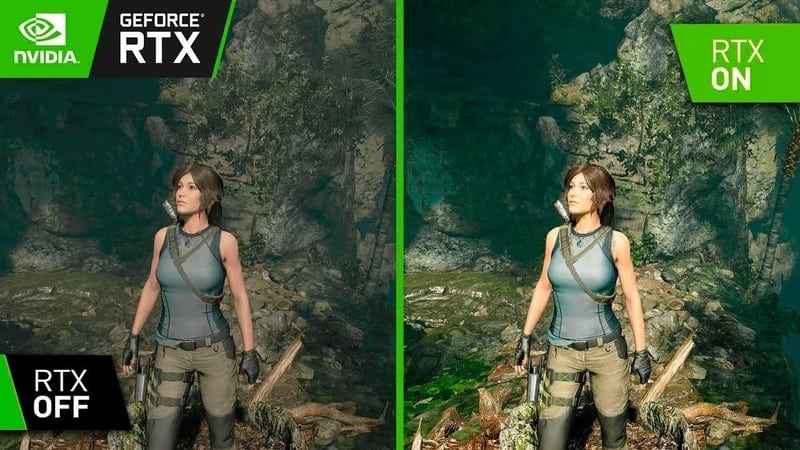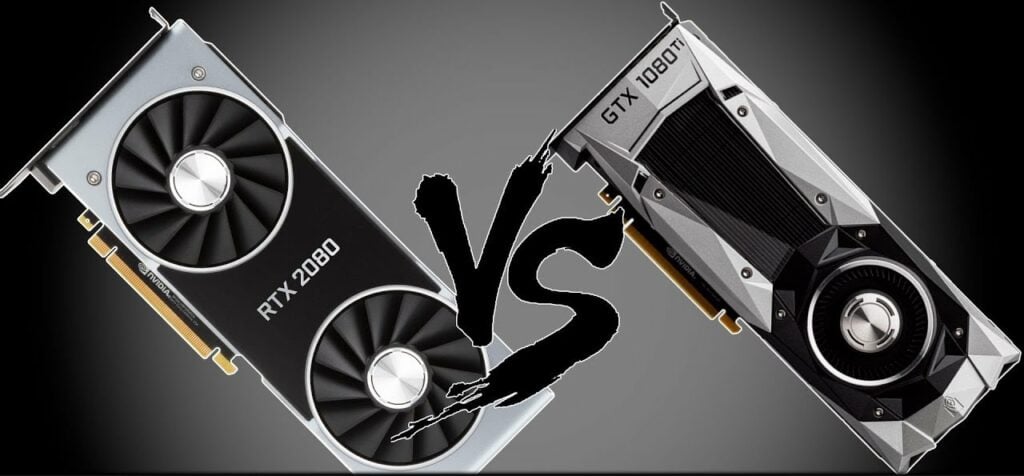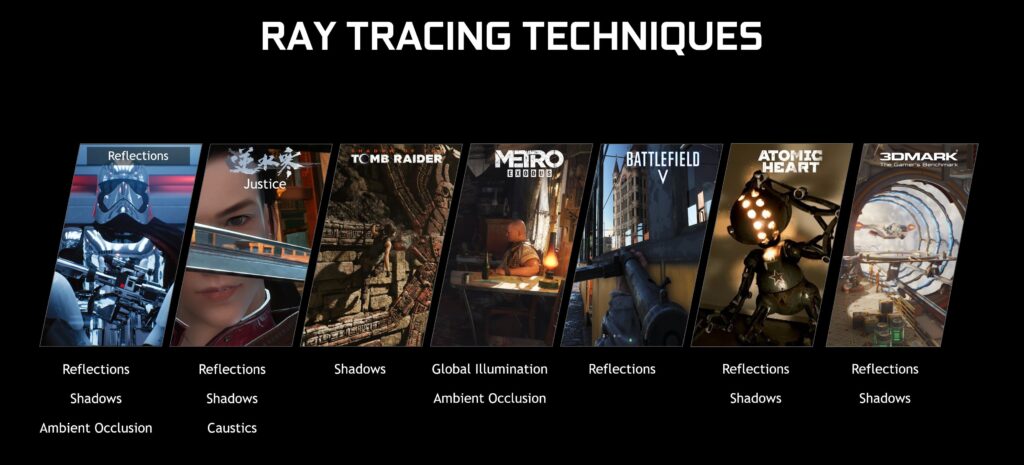In this article, we will be comparing the NVIDIA GeForce GTX vs RTX series so that you can select the right one for yourselves. Also, Read: Graphics Card Buying Guide: All You Need to Know
NVIDIA GeForce GTX vs RTX Series
What is RTX?
When it comes to selecting graphics cards for gaming, NVIDIA is the go-to choice for many. Now, NVIDIA has a dedicated lineup for gaming called the NVIDIA GeForce. The GeForce itself has two different series called GTX and RTX. RTX is new compared to the GTX series and it has a lot of modern technology and features involved. The RTX series come with Ray Tracing cores and Tensor cores. This enables real-time ray tracing with the RTX series bringing a surreal gaming experience. The RTX series graphics cards are the first ones to use ray-tracing cores and have dedicated ray-tracing hardware. This ultimately means that you get movie-like light effects in a game and that too in real-time. The RTX series is also the first ones to come with Tensor Cores. These cores provide superior AI capabilities. NVIDIA says that the Tensor Cores can deliver over 100 teraflops of AI processing. This can dramatically improve the gaming performance combined with NVIDIA DLSS. Also, Read: How to Check Graphics Card Details in Windows 10?
Basic Differences: NVIDIA GeForce GTX vs RTX
Here are some of the key differences between NVIDIA GeForce GTX vs RTX from NVIDIA itself:
Architecture
Surprisingly, the architecture on both the GTX and RTX series share very little difference. The newer models of the GTX and RTX series both use the Turing architecture. This is the best architecture to date. The Turing architecture has 1.4 times better power efficiency compared to the previous ones. Overall, the cards with this architecture run quieter and are cooler. The RTX series obviously has better cores and clock performances but it is by design. The GTX series cards that are based on Turing architecture are also quite good. Only the older GTX cards that use the previous architecture have low performance compared to the new ones.
RT Cores and Tensor Cores
Ray Tracing and RT Cores
RT Cores is short for Ray Tracing Cores. These cores are the main difference-maker between the RTX and GTX series. Ray tracing allows more realistic lighting and reflections in games. Although you can play games without ray tracing, using it just takes gaming to another level. It is still possible to do ray tracing without the RT cores but you lose the performance tremendously. With the RTX series having dedicated hardware for ray tracing, the performance is just next level. RTX series does not slow down the gameplay for ray tracing. In fact, it is 6 times faster than any other GPU. The ray-tracing cores allow real-time ray tracing which makes the game look surreal. Even if you do not use ray tracing, the RT Cores will definitely increase the graphics performance significantly. Now the only important question to ask is: Is ray-tracing even worth it? Well, as per data from 2020 there are just over 20 games that come with ray tracing and only a few of them are new AAA titles. So as of now, it is not that big of a deal but yes it is obviously good to have.
Tensor Cores
Tensor Cores are another thing that is only present in the RTX series and not in the GTX series. Combine Tensor Cores with Deep Learning Super Sampling(DLSS) and you have next-level AI capabilities. All of this results in crisper and sharp images during gameplay. These cores also help in enhancing the ray-tracing performance. But again, DLSS is a relatively new technology and only a few games support it.
Which one is Futureproof?
Here, the RTX series has an edge over the GTX series. With RT Cores, Tensor Cores, and DLSS, it is clearly more advanced. The RTX Series can perform better with the new next-gen games. Both the GTX and RTX series use the PCIe 3.0 interface. Both the GTX and RTX series support 1440p and 4K gaming. Although, 1080p is still the most used resolution for gaming. So yes, the RTX series is more future-proof.
Pricing
Given the fact that the RTX series is relatively new and offers more features, the price is high for the RTX series. But the price gap between GTX and RTX is a bit much. Generally, they are a few hundred dollars expensive. Do note that both of these are high-end gaming graphics cards so the price difference is a bit much with RTX offering some cool features that do not have much use as of now.
One More Thing
One of the common opinions in the community is that RTX is just for marketing. If you look at the RTX series now, it offers real-time ray tracing, higher AI capabilities, and all. But these features have limited use as of now. Most games do not even support the new features of the RTX series. RT Cores, Tensor Cores, and DLSS are the biggest ISPs of the RTX series and they do not have much use as of now. So if you take them out of the equation and just compare the latest GTX series cards to RTX cards, there is not much difference there. So the RTX series is just there to keep NVIDIA in the game with features and performance overkill and the GTX series is still very much relevant.
The Bottom Line: GTX vs RTX
The bottom line is if you play games that can use ray tracing and DLSS, then sure the RTX series is good for you. However, if you are looking for a superior graphics card on a budget, the newer ones in the GTX series are just as good as anything. Also, Read: Motherboard Buying Guide: All You Need to Know


